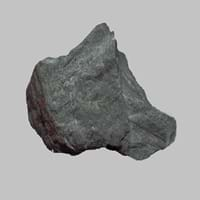Definition
Skarns are formed during regional or contact metamorphism and from a variety of metasomatic processes involving fluids of magmatic, metamorphic, and/or marine origin
Taconite is a low-grade iron ore which belongs to sedimentary rock and containing about 27% iron and 51% silica
Origin
USA, Australia
Western Australia, Minnesota
Discoverer
Tornebohm
Newton Horace Winchell
Etymology
From an old Swedish mining term originally used to describe a type of silicate gangue or waste rock.
From the name of Taconic Mountains in New England
Class
Metamorphic Rocks
Sedimentary Rocks
Sub-Class
Durable Rock, Hard Rock
Durable Rock, Medium Hardness Rock
Group
Not Applicable
Not Applicable
Other Categories
Fine Grained Rock, Opaque Rock
Coarse Grained Rock, Opaque Rock
Texture
Earthy, Mud-rich, Rough
Banded, Trellis
Color
Black, Brown, Colourless, Green, Grey, White
Red, Reddish Brown
Durability
Durable
Durable
Scratch Resistant
Yes
Yes
Appearance
Dull
Layered, Banded, Veined and Shiny
Interior Uses
Decorative Aggregates, Entryways, Interior Decoration
Decorative Aggregates, Entryways, Flooring, Homes, Interior Decoration
Exterior Uses
As Building Stone, As Facing Stone, Garden Decoration, Paving Stone
As Building Stone, Garden Decoration, Paving Stone
Other Architectural Uses
Curbing
Curbing
Construction Industry
As a Flux in the Production of Steel and Pig Iron, As a Sintering Agent in Steel Industry to process Iron Ore, As Dimension Stone, Gold and Silver production, Manufacture of Magnesium and Dolomite Refractories
As Dimension Stone, Used for flooring, stair treads, borders and window sills.
Medical Industry
Not Applicable
Not Yet Used
Antiquity Uses
Artifacts, Monuments, Sculpture
Artifacts
Commercial Uses
Creating Artwork, Gemstone, Jewelry, Metallurgical Flux, Source of Magnesia (MgO)
As a touchstone, Cemetery Markers, Creating Artwork
Types
Endoskarns
Not Available
Features
Host Rock for Lead, Zinc and Copper Deposits
Is one of the oldest rock
Archaeological Significance
Famous Monuments
Data Not Available
Data Not Available
Famous Sculptures
Data Not Available
Data Not Available
Pictographs
Not Used
Not Used
Petroglyphs
Not Used
Not Used
Formation
Due to change in environmental conditions, rocks are heated and pressurized deep inside the Earth's surface. Skarn is formed from the extreme heat caused by magma or by the intense collisions and friction of tectonic plates.
Taconite is a type of sedimentary rock formed when a river carries or transports pieces of broken rock as it flows. When the river reaches a lake or sea, its load of transported rocks settles or deposits at the bottom of sea or lake.
Mineral Content
Calcite, Enstatite, Epidote, Garnet, Magnetite, Pyroxene, Titanite
Hematite, Magnetite, Quartz
Compound Content
Au, CaO, Carbon Dioxide, Cu, Fe, MgO
Fe, Iron(III) Oxide, Silicon Dioxide
Types of Metamorphism
Burial Metamorphism, Cataclastic Metamorphism, Contact Metamorphism, Hydrothermal Metamorphism, Impact Metamorphism, Regional Metamorphism
Not Applicable
Types of Weathering
Not Applicable
Biological Weathering, Mechanical Weathering
Types of Erosion
Not Applicable
Chemical Erosion, Coastal Erosion, Glacier Erosion, Water Erosion, Wind Erosion
Grain Size
Fine Grained
Large and Coarse Grained
Fracture
Irregular
Uneven, Splintery or Conchoidal
Streak
Light to dark brown
White
Porosity
Less Porous
Highly Porous
Luster
Waxy and Dull
Earthy
Specific Gravity
2.86
5-5.3
Transparency
Opaque
Translucent to Opaque
Density
2.8-2.9 g/cm3
Not Available
Resistance
Heat Resistant
Heat Resistant, Impact Resistant, Pressure Resistant, Wear Resistant
Deposits in Eastern Continents
Asia
China, India, Russia, Saudi Arabia, South Korea, Sri Lanka
China, India, Iran, Iraq, Oman, Russia, Saudi Arabia, Taiwan, Thailand, Vietnam
Africa
South Africa, Western Africa
Kenya, Morocco, South Africa, Tanzania
Europe
United Kingdom
Austria, France, Greece, Italy, Malta, Poland, Portugal, Serbia, Spain, Sweden, United Kingdom
Others
Not Yet Found
Greenland, Mid-Atlantic Ridge
Deposits in Western Continents
North America
Canada
Canada, Mexico, USA
South America
Brazil, Colombia, Paraguay
Bolivia, Brazil
Deposits in Oceania Continent
Australia
Central Australia, Western Australia
New South Wales, Queensland, South Australia, Western Australia
All about Skarn and Taconite Properties
Know all about Skarn and Taconite properties here. All properties of rocks are important as they define the type of rock and its application. Skarn belongs to Metamorphic Rocks while Taconite belongs to Sedimentary Rocks.Texture of Skarn is Earthy, Mud-rich, Rough whereas that of Taconite is Banded, Trellis. Skarn appears Dull and Taconite appears Layered, Banded, Veined and Shiny. The luster of Skarn is waxy and dull while that of Taconite is earthy. Skarn is available in black, brown, colourless, green, grey, white colors whereas Taconite is available in red, reddish brown colors. The commercial uses of Skarn are creating artwork, gemstone, jewelry, metallurgical flux, source of magnesia (mgo) and that of Taconite are as a touchstone, cemetery markers, creating artwork.










